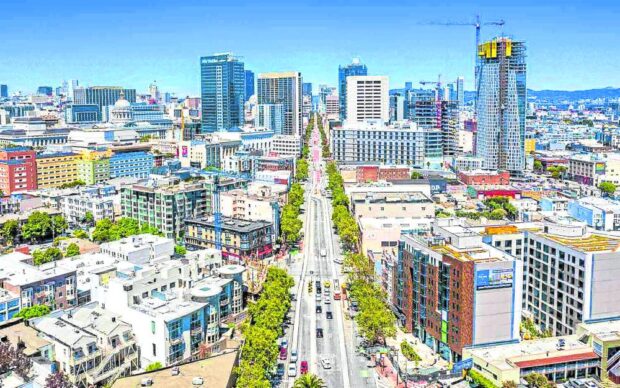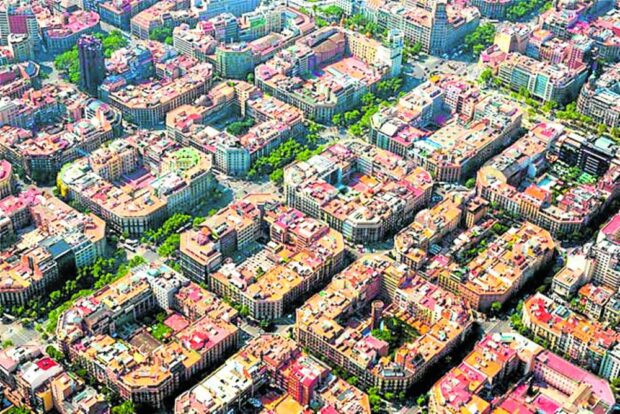Blocks, streets and the making of cities

The grid pattern was easier to understand and friendlier to commercial traffic. (HTTPS://WWW.NYCTOURISM.COM)
Most of us don’t think much about city blocks. They’re just there, part of the fabric of our daily routine.
But the decisions we make about how to organize them determine quite a bit the sort of urban life we end up living. How long the block should be, what kind of intersections to create, how to fit them to the topographic contours of the city—all of these are vital choices that make a city what it is, whether we think much about them or not.
Grid system
San Francisco, America’s most famous hilly city, chose more than a century ago to run a grid system up and over its steep hills. Some local leaders thought this was crazy, but it created the delightfully quirky place San Francisco has been ever since.
In 1811, New York City redrew its street map to impose a grid system on the entire island of Manhattan north of Greenwich Village. The grid pattern was easier to understand and friendlier to commercial traffic. People have lived with it ever since, and so have virtually all other American cities.
But wherever it was imposed, the grid generated a nearly universal complaint: it was boring. The American Institute of Architects issued a report formally denouncing grids as “tiresome” and “old-fashioned,” singling out Philadelphia as possessing the most “unyielding and ugly rectangular system.”
Article continues after this advertisement
San Francisco chose more than a century ago to run a grid sys- tem. (HTTPS://WWW.TRAVELANDLEISURE.COM
Grids were symbols of unvarying sameness in a society whose intellectual leaders prided themselves on experiment, spontaneity and a willingness to take off in new directions. Grids never took off in new directions. They just went on straight, mile after monotonous mile.
Article continues after this advertisementA neighborhood of blocks
But what would be an improvement to the grid? To answer this question, let’s take a look at Barcelona, a city that has been experimenting with grid systems nearly 200 years ago.
It was in the 1840s when Ildefons Cerda, an eccentric Barcelona architect, designed and created L’Eixample, an entire neighborhood of blocks. Most of the city’s leadership thought Cerda was crazy. One prominent architect complained of the neighborhood’s “total monotony, its lack of grace, its inability to understand that life can be pleasant.”
But, in fact, making life pleasant was exactly what Cerda was trying to do. The most important thing to him wasn’t the shape of the blocks, but rather what could go inside them. He saw each block as a close-knit little community, with a garden within the walls for the residents to relax, socialize and play. He called his blocks “the clear and genuine expression” not only of mathematical equality “but of the equality of rights and interests, of justice itself.”
L’Eixample was something of a joke in Barcelona for almost a century, but in the last 40 years its rounded street corners and internal courtyards have become fashionable, so much so that only the wealthy could afford to live there.
Now the city is going back to Cerda’s vision. In the last five years, it has built six new superblocks, each slightly more than a quarter mile long, and wants to establish 21 of them by 2030. Inside each superblock is a network of nine streets limited to pedestrians and slow-moving traffic. In the words of today’s planners, the goal is “to recover space for the community, improve biodiversity, move towards sustainable mobility and encourage social cohesion.” The interiors of the superblocks contain parks, playgrounds, and lots of trees.
True freedom
What Barcelona is doing has attracted acolytes among like-minded architects all over the globe.
One might argue that the entire debate about grids and superblocks is about freedom versus order. Unless you are a dogmatic libertarian, you understand that true freedom exists within communities, in places where people have the opportunity to express their desire for regular sociability. The freedom to drive your car through endless traffic jams isn’t much of a freedom at all.

The interiors of the superblocks contain parks, playgrounds, and lots of trees.(HTTPS://ATIPIKA.COM)
The current generation of Barcelona planners is trying to create a freedom born of physical order and contiguous community. It is too early to predict how successful this will be, but it seems appropriate to wish them luck.
The author is a fellow of the United Architects of the Philippines (UAP) and the Philippine Institute of Environmental Planners (PIEP), and principal urban planner of CONCEP Inc, a planning consultancy firm
